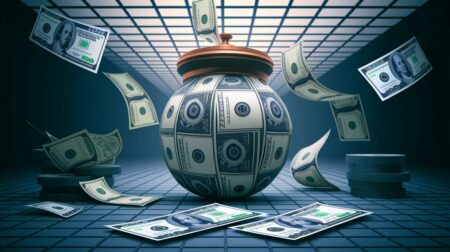How people are shopping rarely enters into climate change discussions unless the focus is on reducing consumer impacts or recycling. That’s not the case for an intriguing new paper from the United States Federal Reserve Board, which looks at the impacts of climate change on jobs and the retail economic sector.
The “Sellin’ in the Rain” paper, written by Federal Reserve environmental economist Brigitte Roth Tran, sets out to look at the climate impacts for retail just as others do for health care, labor or agriculture. Her conclusions raise concern over economic impacts to low-paid retail workers, as well as companies and brands that are likely to see pattern changes in how, why and when people buy their products.
“In this paper I study adaptation in the context of retail sales, a sector not typically considered particularly weather-sensitive, that accounts for roughly ten percent of total employment,” the author explains. “I examine both long-run adaptation to climate and short-run adaptation to weather shocks in the context of one apparel and sporting goods retail brand.”
The first type refers to adaptation that happens when people become less sensitive to a specific kind of weather phenomenon, like learning how to drive in the snow or buying vehicles built for winter. The latter looks at the kinds of immediate decisions people make when conditions change, whether positive or negative. That could mean taking a hike and scrapping shopping plans on an unseasonably warm day. It also could mean paying for heat during severe winters instead of buying clothes, or buying home improvement materials ahead of a tropical storm. Each has a price tag.
“Individuals working in retail with sales-based pay or hourly wages may experience increasingly large income swings as weather becomes more variable and affects sales and hours worked,” she said of her findings. They were based on proprietary store-level data for the brand, combined with a modeling technique that allowed Roth Tran to have some visibility into how weather and climate affect shopping behavior.
The volatility for people she defines as “relatively low-skilled laborers” could present new hardships, beyond their already low-paid status and the lack of stability in store schedules, paychecks, and decisions about child care and transportation.
What Roth Tran concludes is that – at least for the apparel-sporting goods model she chose – weather can induce large and largely permanent swings in retail sales for stores, also implying that “short-run adaptation to weather shocks can potentially affect firm profitability in addition to worker wages.”
She also concludes that more study is needed to answer new questions, such as how specific kinds of product are impacted or the ways consumers shift patterns when bracing for or cleaning up after a single event.
Did you like it? 4.3/5 (22)







